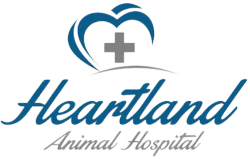In-depth Pet Care Insights
FAQs
Expert pet care FAQs: Payments, services, vaccines, emergencies, and more answered by Heartland Animal Hospital, Owatonna.
We proudly serve the pets in Owatonna, MN, and beyond.
At Heartland Animal Hospital, Owatonna, we understand that pet parents often have a lot of questions and concerns about their furry friends. Below, we’ve compiled some frequently asked questions (FAQs) to provide valuable insights. If you have more questions or need further assistance, please don’t hesitate to reach out to us at 507-214-7387.
What can I expect during my visit to Heartland Animal Hospital?
1. Get Settled
Please arrive approximately 5 minutes early to fill out our New Patient Form. To save a bit of time, you can complete the New Patient Form online in advance.
2. Meet Your Veterinarian
A member of our team will review your pet’s history and discuss their issues. You can ask any questions you want, and we’ll dedicate time to answering them.
3. Exam, Diagnosis, & Treatment
Once your pet has been assessed, we’ll provide you with a diagnosis and treatment options. Your veterinarian will work with you to create a treatment plan for your pet.
